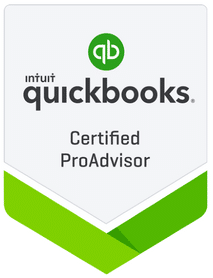- Patrick Roney
- (877) 503-8607
Follow Us :
Follow Us :
Proledge
November 11, 2011

Over the years, QuickBooks has matured and the rate of innovation in the product itself has been decreasing significantly. The real innovation is now in the breadth of third party services and applications that interface with QuickBooks. If you have a financial need that QuickBooks cannot fulfill, the odds are that there is a third party application that can. In most cases, you will be able to exchange data back and forth between this application and QuickBooks very easily.
A few years ago, Intuit realized that QuickBooks could not be everything for everybody and decided to open up QuickBooks to third party developers. They offered development tools and certification processes to these third parties. Developers don’t need a stamp of approval from Intuit to interface with QuickBooks, but it is generally safe to select applications that have been reviewed by Intuit.
You wish that there was a single location where you could find a catalog of these applications, but for historical reasons that are more technically driven than consumer oriented, you actually have to go to two separate places to browse:
The Marketplace (client software) started a lot earlier than the App Center (web applications), so you still have many more options and solutions in the Marketplace, but the future is with the cloud applications. One would expect the App Center to become the main attraction very soon. If you find two comparable applications in the Marketplace and the App Center, I would recommend to opt for the App Center version (in the cloud). Web applications don’t need to be installed, are easier to maintain, get upgraded seamlessly over time, can be accessed from anywhere and don’t need to be backed up.
A key challenge with add-ons is to figure out what is available. Too many times do I see small business owners going to extraordinary length trying to bend QuickBooks to do things it is not designed to do, when there is a 3rd party application out there specifically designed for this.
Here is a sample of categories of applications that QuickBooks add-ons cover. In some of these categories, you may have only one provider, in others, dozens of competitors. The goal here is not be to be exhaustive, but to give you a flavor of what’s available:
Many of these add-ons offer free trials, so do not hesitate to try multiple solutions before selecting the final one. Also, before you interface any application with QuickBooks, make sure to backup your QuickBooks data. Sometimes, the first synchronization between QuickBooks and a third party application can go wrong and corrupt your QuickBooks data. Creating a snapshot of your data before the first sync (or any sync for that matter) is always a good idea.


Fill out the form below to sign up to our Blog Newsletter and we’ll drop you a line when new articles come up.
Bookkeepers.
Professional. Affordable.
ProLedge is a bookkeeping services firm.
Copyright © 2024 All rights reserved.
Hello. Can we help you?